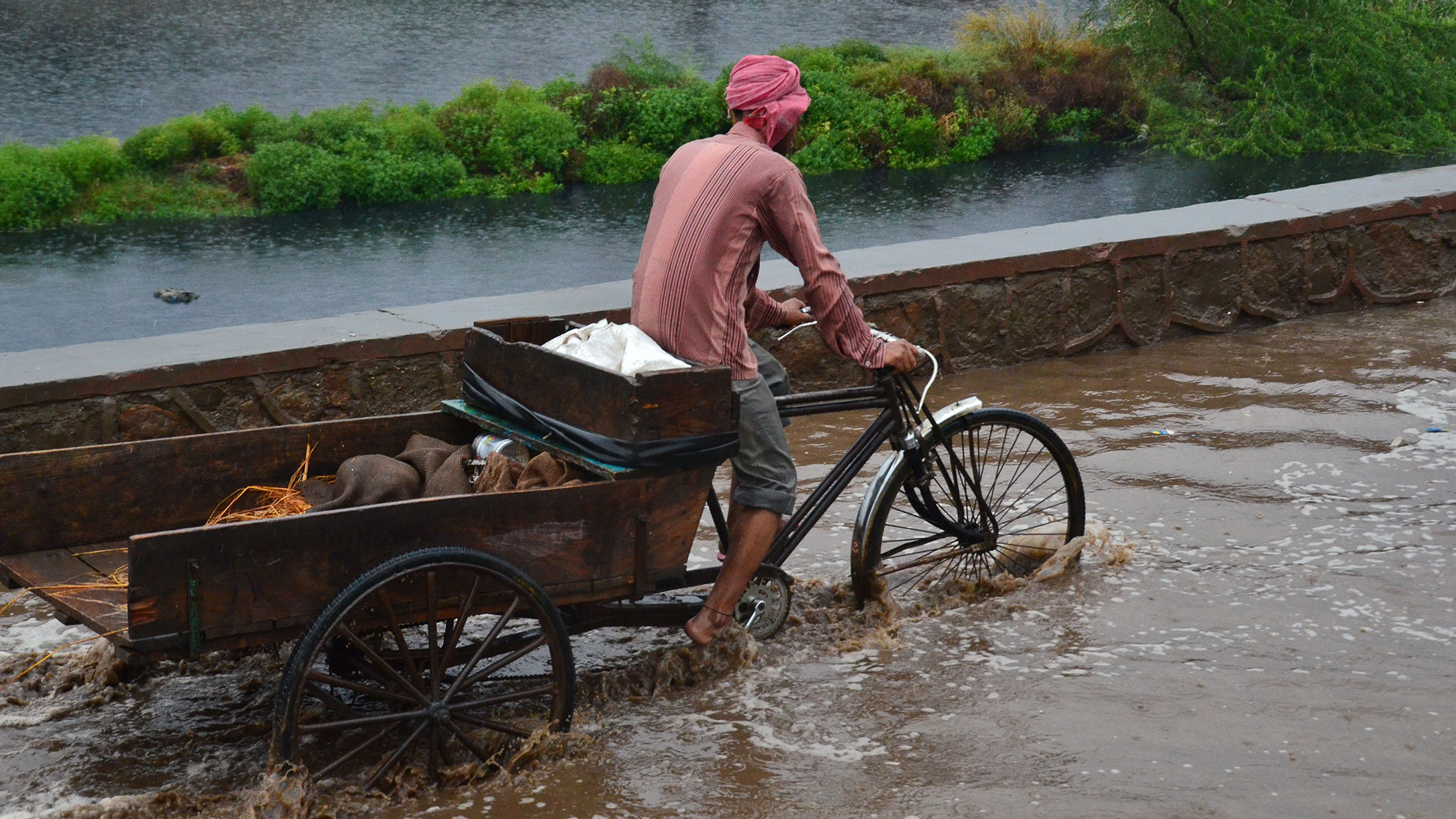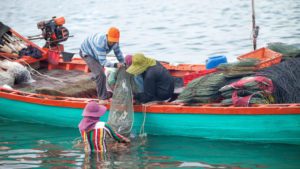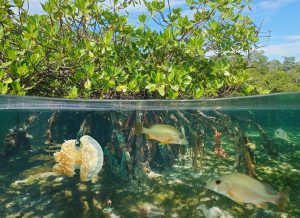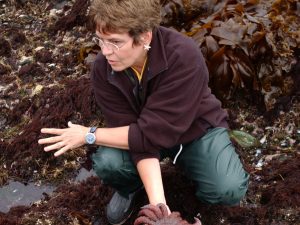Editor’s note: This perspective piece originally appeared in the first edition of Our Shared Seas.
It is easy to feel overwhelmed by the scope and magnitude of human threats to ocean ecosystems. The list of threats is familiar at this point: climate change, overfishing, eutrophication and dead zones, ocean acidification, invasive species, coastal development, habitat destruction. And the list is growing to include marine debris, microplastics, light and noise pollution, deep sea mining, and more. As a scientist, how do I make sense of all of this when trying to understand and predict how species and ecosystems respond to human pressures? And as a resource manager or philanthropist, how does one figure out where to prioritize allocation of resources and actions?

Photo: koujim30/stock.adobe.com
I have spent the last decade digging into these questions, tracking down data on each type of stressor to figure out what is known and unknown, expanding my work beyond just threats to also address how nature benefits people, and developing methods to put everything together in a structured, informed, and transparent way. From this work I offer four take-home messages.
The most pressing issue is . . . it depends. This is an infuriating answer for policymakers and conservationists, and one that scientists are accused of giving too often. But it really does depend. It depends on scale (e.g., global, a country, a particular bay) and scope (e.g., a species, a habitat type, the whole ecosystem). Globally, the greatest threats are climate change and overfishing. For a particular coastal bay or tropical island or threatened species, it could be eutrophication from watershed runoff, shoreline hardening from coastal development, or one of a host of other issues. The point is, you must know the context and think about the full suite of stressors and how they might interact to know what is going on. Only then can you figure out where, and how, to act to protect that patch of ocean.
People focus too much on single pressures. It makes sense why people do this—it is easier to study a single threat or act on a single pressure. Reduce fishing by creating a marine protected area. Study how warming the ocean affect coral reefs. Ban plastic bags. These are all important measures but may sow confusion about the root causes of ocean degradation or have little effect on improving ocean health, and may even do unintended harm. We know that multiple stressors are ubiquitous and that stressor interactions can lead to surprises, yet single-issue strategies predominate and ignore all of this. We still know shockingly little about how three, four, or more simultaneous stressors interact to affect species and ecosystems, and management rarely has the capacity (or mandate) to address more than one issue at a time.
We know a lot, but what we don’t know is remarkable. We are awash in data, from high-resolution satellite imagery to thousands if not millions of survey transects, along with many other sources of data. These data tell us a lot about how the ocean works, what benefits they provide us, and how they are changing. Yet profoundly important data gaps remain, including two that are particularly surprising. For the vast majority of the ocean, we know almost nothing about the extent or condition of habitats, yet habitats are the foundation for whole ecosystems and the source of innumerable benefits to humanity. Additionally, for most of the world we do not know how much of a country’s economic health and workforce is supported by coastal and marine resources, even though policy, investment, and conservation decisions are highly dependent on this kind of information.
I remain an optimist, but the window of opportunity is closing. The impact of human activities on the ocean is vast and, in most places, growing. Yet there are many bright spots, where cumulative impacts remain low or are improving and the ocean is still healthy. Effective management can make a substantial difference, in part because the ocean remains fairly resilient (for now). Identifying the most pressing threat(s) to a place and accounting for uncertainties in what we know and do not know form the foundation for effective management. Spending time and money on pressures or issues that have little impact on a region or little importance to people will do little to improve ocean health, and could even jeopardize it.
Lessons learned are helpful, but translating those lessons into concrete guidance and actions makes them meaningful. What do these lessons mean for a foundation or an individual interested in making an investment for change? If the goal is to engage the public, then focusing on, for example, a plastic bag ban may be a good strategy. To make a substantial difference in improving ocean health, there are better places to focus time and resources, including the following:
- Invest more in understanding how ecosystems and human systems respond to different combinations of multiple stressors. Any insights from this work will be powerfully important. And support policy initiatives that embrace this approach to management.
- Help fill key data gaps. It is not sexy science to do baseline, long-term monitoring, but it is fundamentally important. We cannot effectively manage ecosystems if we do not know what is in them, where they are, and how they are doing. In particular, we need to map and monitor all habitat types globally at high resolution. Ideally, such mapping should be performed on a regular basis to track change.
- Support environmental data science training. Pulling together and prepping highly varied data, analyzing the data and visualizing results in transparent and repeatable ways, and communicating results to different audiences are all critical to environmental problem solving, but the skills underlying these tasks remain nascent for most environmental scientists.
- Coordinate efforts and resources to help mitigate the impacts of climate change, through policy and technology and shifting people’s behavior. We know enough about climate change impacts to require bold action, now.
I don’t know exactly how much time we have left before we do irreparable damage to the ocean, but it is certainly in the order of a few decades, at most. As it will be much costlier to fix things in the future, any improvements now will pay large dividends.
***
For additional research by Dr. Halpern characterizing the impacts of human activities on the ocean, please see “Recent pace of change in human impact on the world’s ocean.”
Dr. Benjamin Halpern is a Professor of Marine Biology and Conservation Science at the Bren School of Environmental Science & Management at UC Santa Barbara and Director of the National Center for Ecological Analysis and Synthesis (NCEAS). Dr. Halpern focuses his research at the interface of marine ecology and conservation planning. His research has addressed a broad range of questions that span local to global scales, including spatial population dynamics, trophic interactions in community ecology, and the interface between ecology and human dynamics, all with the ultimate aim of informing and facilitating conservation and resource management efforts in marine systems.



